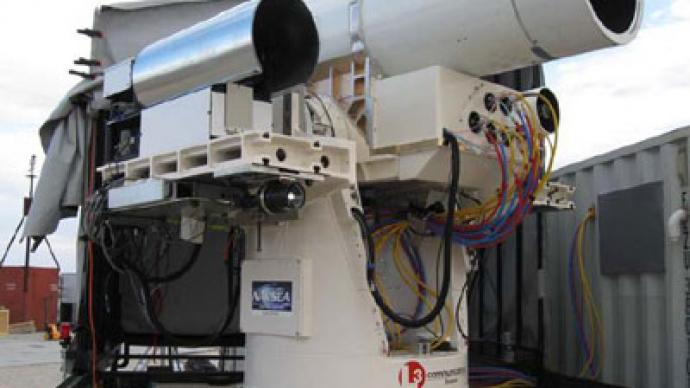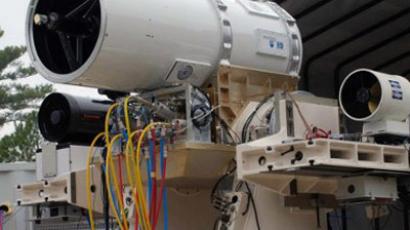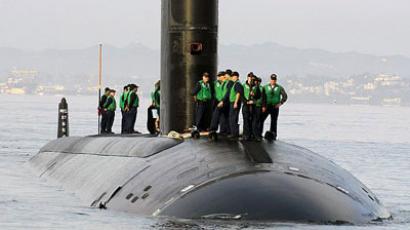'Star Wars' at sea: US Navy could deploy laser weapon in two years

The US Navy’s research office expects that ship-based laser weapons will be ready for deployment in two years, which is two years ahead of previous estimates. But this futuristic weaponry may face setbacks in the form of looming budget cuts.
“We’re well past physics,” Rear Admiral Matthew Klunder, the chief of the Office of Naval Research (ONR), told Wired Magazine’s ‘Danger Room’ blog in an interview after announcing his expectations.“We’re just going through the integration efforts,” he added. “Hopefully, that tells you we’re well mature, and we’re ready to put these on naval ships.”Earlier, the ONR promised that in two years they would have a working prototype of a laser weapon capable of shooting down drones, cruise missiles and speedboats. The weapons would not be finalized for deployment for four years at that rate.The ONR head is now saying that field testing of laser weapons has been “very successful,” mentioning a run during which the Navy brought down drones with the prototype lasers.Klunder, speaking at the ONR’s biennial science and technology conference, also expressed confidence that Navy ships would be able to handle the power requirements for firing these high-tech weapons. “I just need to know on this ship, this particular naval vessel, what are the power requirements, and how do I integrate that directed energy system or railgun system,” he said.He also announced that the Navy will soon roll out new propulsion systems for unmanned underwater vehicles (UUVs), which would greatly enhance their operational duration before refueling.“The propulsion systems that I think you’re going to see within a year are going to [give] a UUV with over 30 days of endurance,” Klunder said. By 2016, a prototype drone sub should be able to spend 60 days underwater at a time, he added.Currently, sub drones can only operate for a handful of days at a time, since modern batteries and fuel cells are too bulky and inefficient. “The breakthrough,” Klunder said, “was really on getting past your more traditional lead-acid battery pieces to more technically robust but also mature lithium ion fuel cell technology and the hybrids of that.”However, the practical deployment of laser guns and sub drones depends in part on whether the Navy can afford them. Research and development programs are facing budget cuts, along with other defense spending in the US.The Pentagon has cut back its spending increases for several years. The Defense Department is also faced with a huge budgetary setback in January if so-called ‘sequestration’ takes place under the Budget Control Act of 2011. Under sequestration, the US military would be forced to cut some $500 billion in spending over the next ten years. The law, which aims to force the government to enact across-the-board spending cuts, would be “disastrous” for the military, US Defense Secretary Leon Panetta said.Sequestration is the ‘poison pill’ included in the US debt ceiling compromise of August 2011, which was meant to spur both sites to agree on a longer-term budget deal. So far, US legislators have failed to reach such a consensus.














